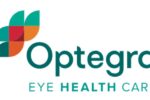
Andrew Woodcock, Chief Scientific Officer at RD Biomed Limited
What is silent reflux?
Silent reflux is caused by gastric contents travelling up the oesophagus and into the throat or nasal cavity. This results in a range of non-specific symptoms often misinterpreted as problems of the throat, such as frequent throat clearing, difficulty swallowing, the feeling of a lump or globus in the throat, and a hoarse, tight or croaky voice. If untreated, prolonged exposure of tissues to stomach pepsin can cause further chronic complications, such as esophagitis, ulcers and even cancer.
How is silent reflux diagnosed?
For most cases, the condition is diagnosed with a combination of the Reflux Symptom Index (RSI) – a clinical scoring tool used to assess symptoms – endoscopy, oesophageal manometry and 24-hour dual-channel pH monitoring, which requires inserting two catheters through the nasal cavity to just above the lower oesophageal sphincter for 24 hours. This diagnostic pathway is not ideal for the clinician or the patient, as it is expensive, time consuming, and invasive, creating not only discomfort for the patient but simultaneously increasing their risk of infection.

What is Peptest?
The idea of Peptest initially came from Professor Peter Dettmar, the founder of RD Biomed and a leading expert in reflux diseases. In his previous role as global R&D Director of Gastrointestinals for Reckitt Benckiser Healthcare – where he was instrumental in developing Gaviscon and Gaviscon Advance – he worked with a group of clinicians to assess the efficacy of the RSI. During this process, he noticed the flaws in the current diagnostic pathway for silent reflux, so set out to find an easier solution. This task began by identifying the best biomarker to detect stomach contents in saliva; one that is specific to the stomach and is not ordinarily found elsewhere unless during a reflux episode. The digestive enzyme pepsin was chosen as the ideal biomarker, as it is created from the conversion of pepsinogen by acid in the stomach, and therefore its presence elsewhere is indicative of gastric content being refluxed. Conversely, an absence of pepsin in saliva samples shows that the stomach contents have not reached the throat, allowing clinicians to rule out the condition.
Once the appropriate biomarker was selected, the next step was to figure out how to detect pepsin non-invasively. A lateral flow test (LFT) – much like the COVID-19 LFTs that we are now all familiar with – was chosen, followed by six years of rigorous development and testing. The resulting LFT features two monoclonal antibodies specific to pepsin, one labelled with a blue latex bead and deposited on the conjugate pad near to the sample well, and the other immobilized onto the test line, and extensive research has shown that these antibodies do not bind to other potential enzymes or artifacts in saliva. In a positive case, pepsin in the sample will bind to the blue labelled antigen and flow along the strip until it is captured by the second antibody on the test line. The more intense the test line, the more concentrated pepsin is in the sample. It is possible to tell within 15 minutes from visual inspection whether the result is positive or negative, and a reader is used to determine the concentration of pepsin from the intensity of the line.

How should Peptest be used?
The process of conducting a Peptest is extremely straightforward; patients provide saliva samples in tubes preprepared with citric acid preservative, seal these in a bag with a completed collection form, and send them via free post to the central laboratory at Castle Hill Hospital. The laboratory will then analyse the samples within a maximum of seven days from collection, and send the results to the clinician that ordered the test with a report highlighting whether the samples are positive and, if so, what concentration of pepsin is present. The entire process provides an objective answer for patients in a matter of days.
When and how often should patients take samples?
We always recommend that three samples are collected at specific time periods within 48 hours, and clinicians tend to follow the continuous diagnostic plan for silent reflux patients. The continuous diagnostic guideline is for those that experience ongoing symptoms generally not associated with reflux, such as a sore throat, lump in their throat or vocal changes. We recommend taking samples first thing in the morning, before the patient has brushed their teeth or eaten anything. This measurement tells us whether they have been refluxing while they are in a supine position at night, as a result of their sleeping position or nighttime routines. We recommend the other two samples are taken at least one hour after their lunchtime and evening meals. This is because most people will experience some physiological reflux – particularly after ingesting caffeinated drinks or smoking – but clinical studies have shown that this kind of reflux should not take place more than an hour after eating.
What do customers say about Peptest?
Several of our ENT and speech language therapy customers find it incredibly helpful to rapidly diagnose or rule out reflux, so that patients can have an answer for their symptoms without the need for costly and potentially harmful diagnostics or empirical treatment. Customers have found that, as Peptest is less expensive and invasive than 24-hour pH monitoring, they are able to test more patients, increasing the accessibility of treatment for all.
Click here to find out more about Peptest.








